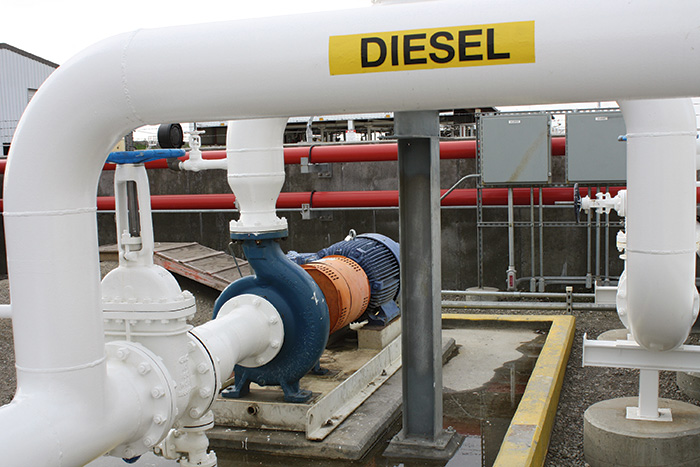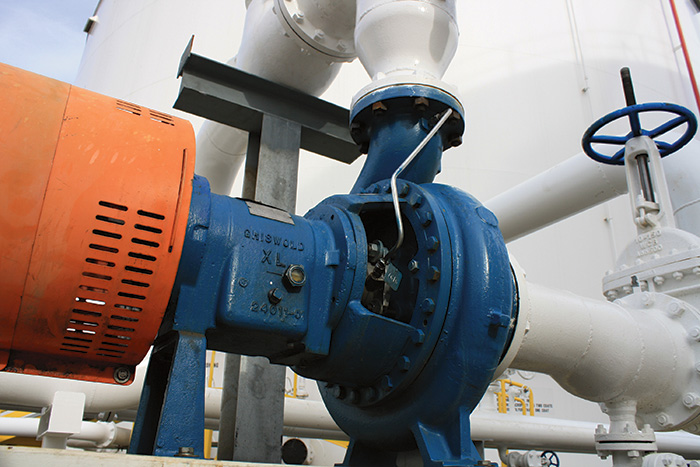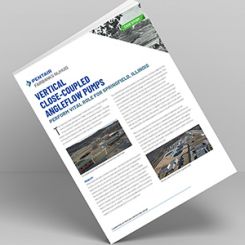Pumps & Systems, April 2013
The oil and natural gas boom in North Dakota’s Bakken Shale has had far-reaching effects. The increased oilfield activity has ignited a population boom in the state. The town of Williston rests in the epicenter of all the new drilling activity.
The growing rate of oilfield activity has had a domino effect, with increased demand for homes, restaurants, grocery stores, hotels, motels and RV parks. Even unconventional oil and gas-related businesses—such as rental storage units—have experienced an uptick in the area.
The U.S. Census Bureau recently determined that Williston has become the country’s fastest-growing “micropolitan” area (areas that feature a population ranging from 10,000 to 49,999).
Whether drilling a new oil well, building a new subdivision or opening a new restaurant, a desire for speed of startup and operation is the common denominator.
Within actual oilfield activities, speed is a crucial consideration. The quicker that the waiting oil and natural gas can be accessed and lifted up a well bore, the quicker it can be sold and shipped to a refinery. When it arrives at the refinery, many different operational considerations must be satisfied. The speed of the entire production, refining and transport process relies on many components working together. A critical one is the industrial pumps that are used in many oilfield applications. This article focuses on one type of pumping technology—ANSI centrifugal—that provides the performance and reliability required for rugged oilfield and refinery operations and meets the speed-to-market needs of demanding oil and natural gas production and refining companies.

ANSI centrifugal pumps offer a method of manufacture that ensures that the speed-to-market requirements of oil and natural gas producers and refiners are satisfied.
The Challenge
With regard to optimization of operations in the current oil and natural gas boom, the command is simple: “Get it done as quickly as possible—and getting it done yesterday would be even better.” Since time is critical in both the oilfield and the refinery, companies need equipment that perform reliably and is readily available.
Today, many production companies are completing new wells daily. This ambitious schedule demands immediate availability of necessary equipment. It also means that pump companies that can have their products ready for shipment at a moment’s notice—along with an available supply of replacement parts if maintenance is required—have opportunities for growth in the current oilfield-equipment market.
Meeting these speed-to-market demands requires a manufacturing regime that combines speed with the ability to produce a quality product. These stringent standards require the best in research and development, engineering, design, and execution of the manufacturing process. A pump that is rushed to market without reliable operation will have a deleterious effect on the manufacturer’s reputation.
Horizontal drilling and hydraulic fracturing have been the driving forces behind the rapid growth in the recovery of oil and natural gas from unconventional shale deposits. To function properly, this technology requires the injection of vast amounts of water, often at rates of thousands of gallons per minute. The water is used as a carrier when the fracturing chemicals are injected down the well bore.
Once the waiting oil and natural gas are accessed, many production byproducts race up the well bore in tandem with the desired hydrocarbons. One of the more voluminous byproducts produced is saltwater, which has been trapped for centuries in the formation with the entrained oil and natural gas. When the saltwater reaches the surface, it must be separated from the oil and natural gas before the production company either ships it away via truck or, in some cases, pumps it via pipeline for disposal or re-injection into the formation.
These saltwater-handling and transfer processes can only be completed successfully if the production company uses equipment that features materials of construction and a sealing medium that is compatible with, and resistant to, the abrasive and corrosive substances in the produced saltwater. In most cases, this means an iron or ductile-iron pump configuration, unless hydrogen sulfide (H2S)—a colorless, poisonous, flammable gas with the characteristic odor of rotten eggs—is present, at which point a stainless-steel pump with a stainless-steel shaft and impeller and a silicon-carbide seal face, should be used with sealing methods dependent on the crude oil’s composition.
Once at the refinery, whether delivered by ocean-traveling tank ship, barge, railcar, tank truck or pipeline, the pumps used to transfer the oil and natural gas into and out of liquid-storage terminals, either as a feedstock or a finished product, require around-the-clock reliability. Any downtime can have a potentially large, adverse effect on the terminal’s operation and profitability.
Centrifugal pumps used in these conditions are under constant assault and must be able to perform reliably while handling diverse operating characteristics, such as:
- Changes in ambient temperatures and other weather conditions, such as humidity
- Line shock from piping that is not anchored properly
- Piping systems that have sharp bends instead of gentle curves
- Changes in the product type being pumped
- Changes in product viscosity
- High volume (unloading a 50,000-gallon tanker) at high flow rates (4,000 gallons per minute)
- Changes in product velocity and force
- Changes in head pressure
The Solution
Faced with the specific challenges in saltwater-handling and refinery applications that are ever-present in oil and natural gas production and refinement, companies are discovering the benefits of centrifugal-style pumps. ANSI centrifugal pumps are ideal for these operations because they are robust enough to pump thousands of gallons of produced saltwater into trucks or pipelines for disposal or reuse. They also have the ability to handle the high-volume/high-flow operations at a refinery.
ANSI centrifugal pumps are engineered for operational flexibility, efficiency and durability. They have two times the wear area between the case and impeller when compared to closed-impeller designs, which optimizes the performance of the pump’s open impeller. The open-impeller design also minimizes concentrated wear by balancing the hydraulic axial thrust load and reducing the stuffing-box pressure. This maximizes pump performance and simplifies maintenance, which can extend pump life and reduce repair costs.
The pump’s casing can be constructed of various materials, including ductile iron; CDM4Cu; alloy 20; and stainless steel, which should be the metal of choice in applications in which the produced saltwater has a high level of H2S. Some ANSI centrifugal pumps are constructed through an investment and no-bake casting process that ensures smooth, precise finishes and consistent, reliable performance. Employing metallurgists is important to strictly supervise all heat-treating operations for maximum durability for all alloys.
A variety of mechanical-seal options will allow the pumps to operate in temperatures up to 500 F (260 C). Other standard-setting features are self-tightening impellers that reduce leaks and failures, the ability to externally adjust the clearance so that peak efficiency is maintained (even after wear-area loss) and standard enhanced power frames.
With a routine regime of preventive and protective maintenance, ANSI centrifugal pumps will consistently operate at their full capabilities. This quarterly maintenance routine should include the monitoring of bearings and lubricants, shaft seals, pump vibration and changes in discharge pressures. These maintenance checks should be performed more often if the pump is used in severe-service conditions, such as those commonly found in oil and natural gas field operations and refining activities.
ANSI centrifugal pumps possess the operational capabilities necessary to meet the demands of high-volume/high-flow, liquid-transfer activities that are prevalent at refineries.
Conclusion
It is ironic that a natural resource that took thousands of years of languishing many miles beneath the Earth’s surface to transform into a usable energy commodity is now being extracted at what seems like the speed of light. In a textbook example of “time is money,” the strength of the modern-day oil and natural gas industry relies on all types of equipment to be readily available—and then perform reliably. P&S

